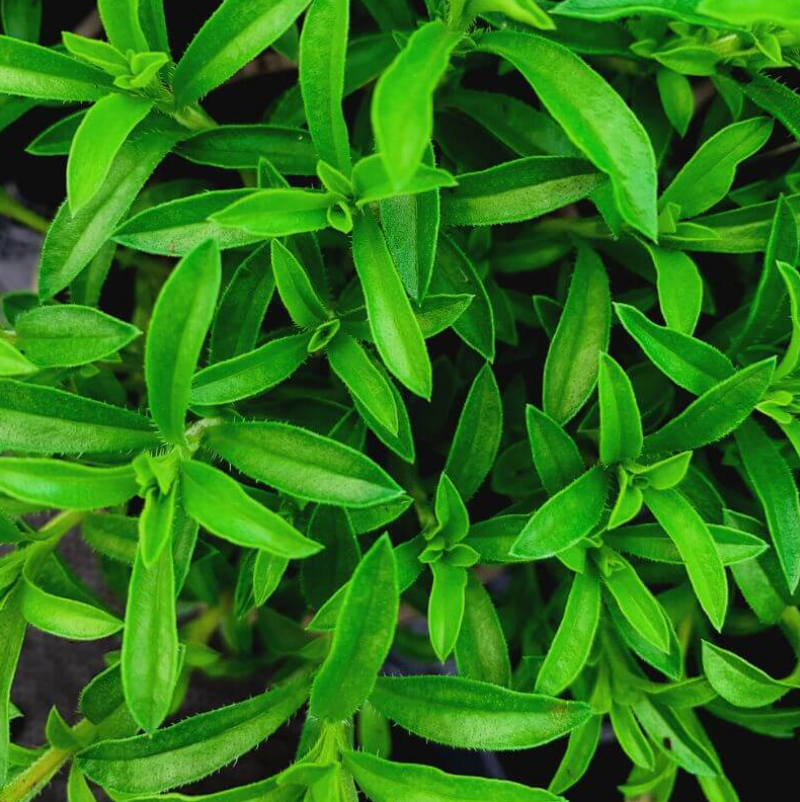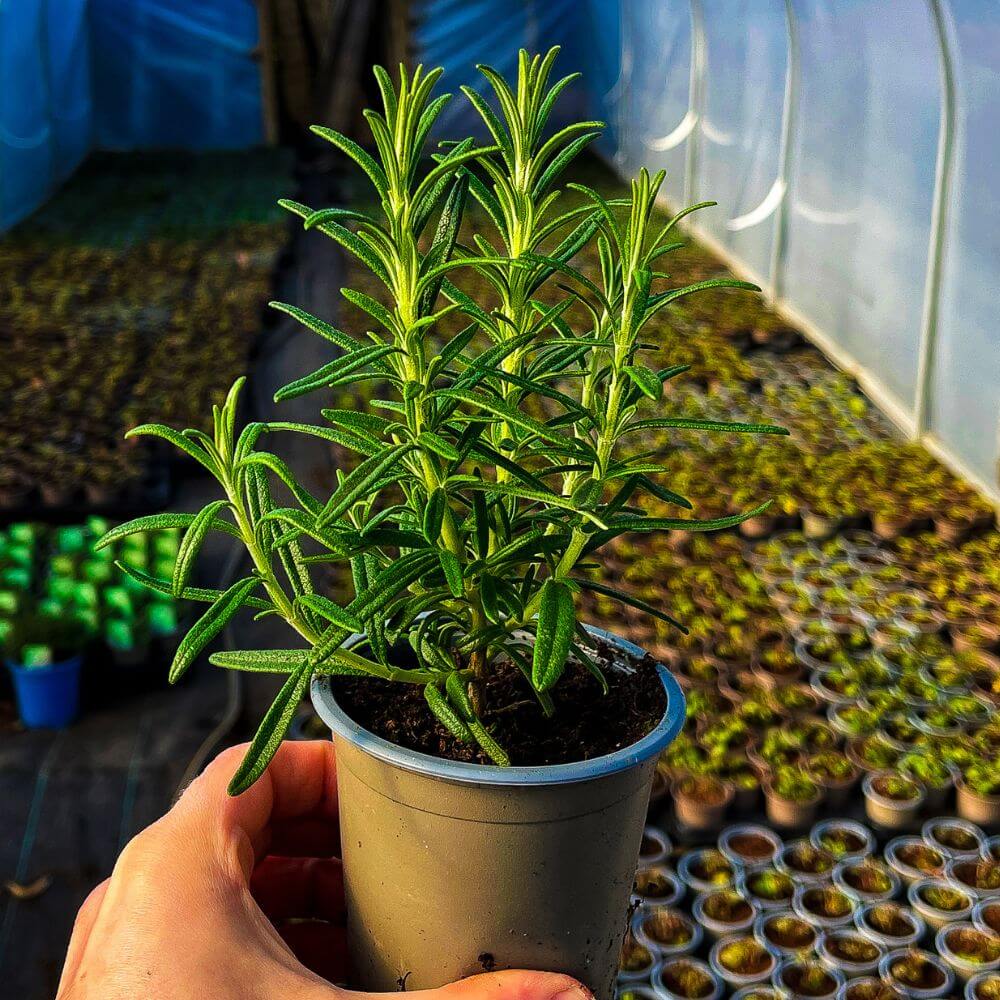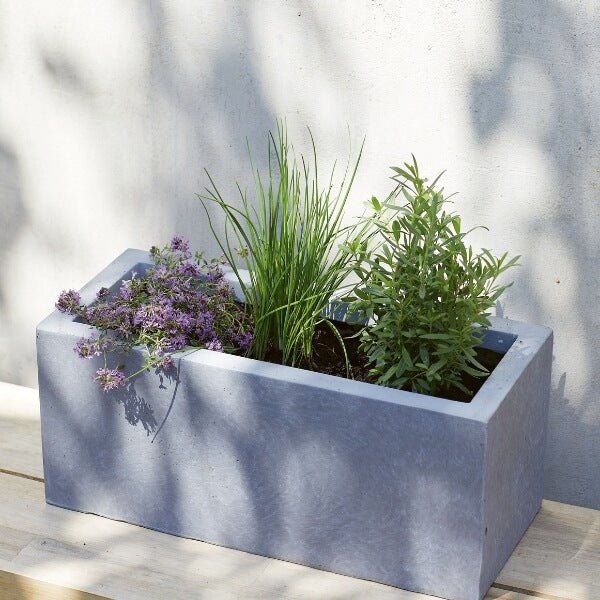How to grow rosemary
So you want to know how to grow rosemary plants? We don't blame you, they are an absolute classic and their enchanting fragrance, culinary versatility, and charming appearance make them an absolute must-have for any herb garden enthusiast. Whether you're a seasoned gardener or just getting started with your first herb garden, rosemary plants are a great addition to your space offering so much joy year after year. In this guide, we'll take you through the ins and outs of planting and looking after your rosemary, from propagation to winter care, all while keeping those rosemary plants flourishing like never before.

Where is best to plant rosemary in the garden
Like all living things, rosemary plants have their preferences. They thrive in sunlight, so ideally you’ll place it in a location that basks in full sun for at least 6-8 hours a day but it will tolerate shade so don’t be disheartened if your garden isn’t a suntrap! Well-draining soil is a must for rosemary so if you have particularly wet conditions, it may be worthwhile to add in some sand or perlite with your soil to improve drainage. A slightly alkaline soil with a pH of 6.0 to 7.5 suits rosemary just right.
We're often ask if rosemary grows better in a pot or in the ground, and the answer is certainly in the ground where it has the freedom to move and send its roots out to search for food and water. That said, it will still grow well in a pot, and many people even have success growing their potted rosemary indoors on a sunny windowsill so it's a great option for a number of spaces and certainly one of the less-fussy plants with their hardy qualities.

How to grow rosemary
Growing rosemary from seeds can be a bit slow taking months on end, so the majority of gardeners opt for ready-grown rosemary plants like ours from our online herb shop and they are certainly worth the investment. As perennial shrubs, they can grow to around 1m in height and with the right care, they’ll bring so much life and fragrance to your space for many years to come. When you find a variety you truly love, we really recommend taking your own cuttings to propagate new plants, this means you can pass them on to friends and family to enjoy.
To get started, snip a 10cm cutting from a healthy rosemary stem, remove the lower leaves just leaving a few cm of leaves at the top, and dip the cut end in a rooting hormone. Use your finger or a pencil to make a hole in a pot filled with compost and then pop the cutting into the home and water it in well. Within a month or so you should be able to see the roots growing and starting to establish the plant’s support system.
An interesting experiment to run with children and adults alike is to propagate your cuttings in water. Simply place your cutting with the lower leaves removed into a glass of water and wait for the magic to happen. Change the water every few days and within a few weeks, you'll see those tiny roots taking shape. Once the roots look nice and healthy, you can pot them up into fresh compost before planting them outside once established.

How to prune rosemary
Pruning rosemary is like giving your plant a spa day—it refreshes its appearance, encourages healthy growth, and even enhances its aromatic charm. Knowing when and how to prune can make all the difference in maintaining a flourishing herb so hopefully, these tips will help you to give your plants the best chance.
In the UK, the best time to prune your rosemary is in the spring, aiming for late March to early April. Pruning during this period allows your plant to channel its energy into new growth and helps it develop a fuller, bushier form. If your rosemary has bloomed during the spring, wait until after its flowering cycle is complete before pruning. This way, you'll ensure that you don't inadvertently remove developing flower buds. Once the blooms have faded, usually by early summer, it's the ideal time to give your plant a light trim.
As summer wanes and the growing season starts to wind down, consider a final touch-up pruning. Around late August to early September, give your rosemary another light trim. This tidying session helps the plant maintain a compact shape and encourages healthy growth going into the cooler months.
When pruning rosemary, less is often more. Use a pair of sharp, clean pruning shears to snip the tips of the branches. Focus on removing about 2-5cm of growth, shaping the plant into a tidy and balanced form. Avoid cutting too far back into the woody stems, as this can hinder regrowth.
As a general guideline, avoid removing more than one-third of the plant's overall growth during a single pruning session. Overzealous pruning can stress the plant and impact its ability to bounce back vigorously.
How to care for rosemary in the winter
In the UK, most varieties of rosemary will survive the tough winter months providing that their roots aren’t sat in wet conditions for months on end. They don’t need any additional care in the winter as long as they’re not sat in water they should come back bigger and better than ever the following year.
Want to learn more? Check out our in-depth YouTube video:
Which varieties of rosemary should I add to my garden?
Well, if we’re being honest, we’d say all of them! But if you’re just getting started, here are a few that we’d really recommend:
Classic Rosemary - a staple for your kitchen garden
BBQ Rosemary - with the addition of a subtle smoky flavour, this is a fantastic herb for summer dishes
Trailing Rosemary - for herb spirals, hanging baskets or anything where a trailing herb will thrive, this variety is a real winner with a softer stem
And there you have it! With these tips and tricks, your garden will soon be filled with the delightful aroma and charm of rosemary plants which you can add to many of your favourite dishes for a flavour boost. If you have any other questions about rosemary plants, just drop us a DM and we’ll get back to you - or, if you really want to get your geek on, why not join our Herb Club?





